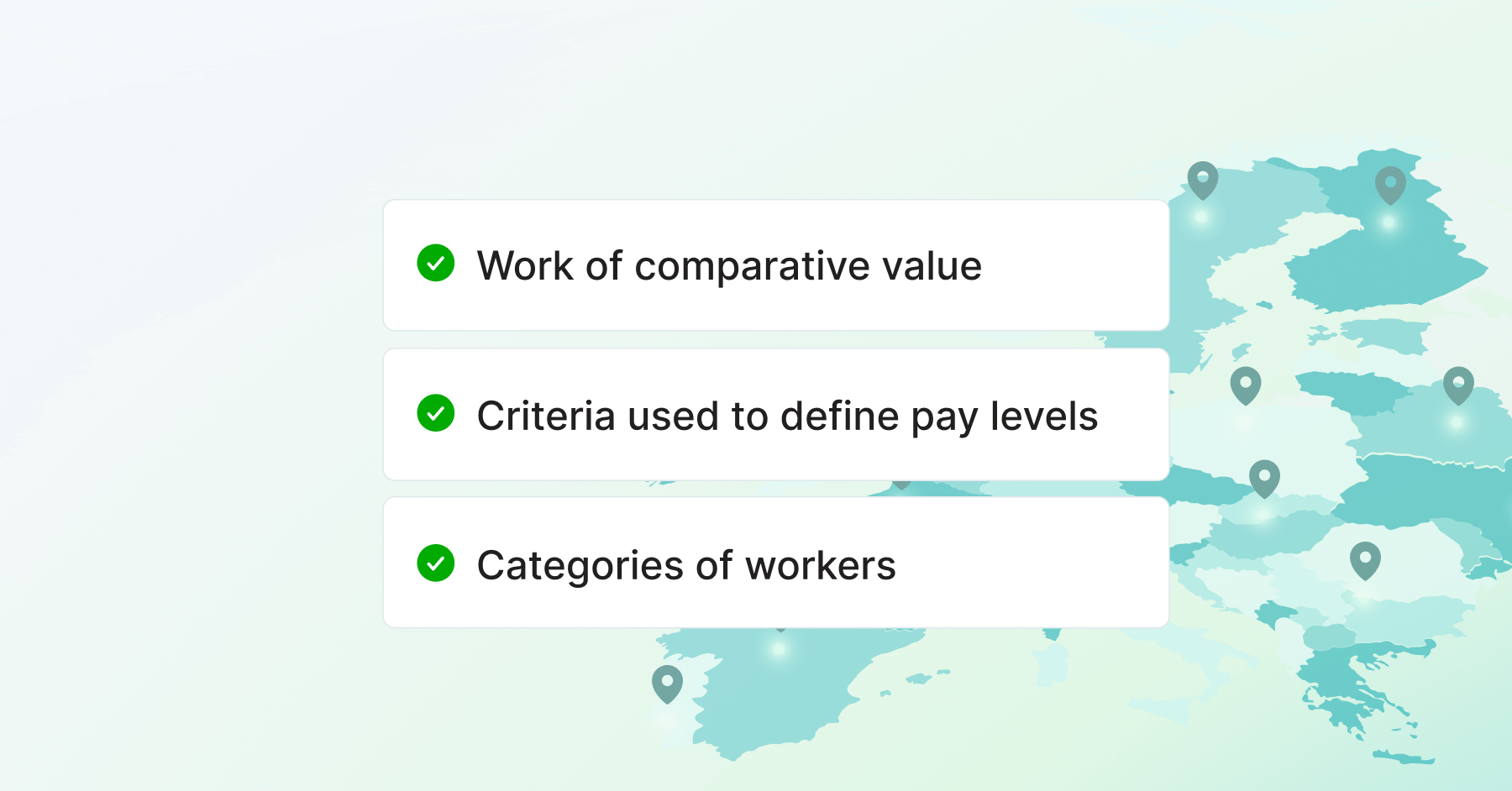The gender pay gap continues to persist in higher education. Women in full-time faculty roles are still making roughly 82 cents for every dollar their male counterparts earn, while female college presidents earn 91 cents for every dollar male presidents earn.
College and university pay discrimination lawsuits in the headlines in the past few years have led to settlements in the millions of dollars, (e.g. $1.2 million, $1.5 million, $2.6 million, and $3.7 million). In addition, expanding pay transparency laws across the U.S. are putting new compliance demands on higher ed HR and compensation teams.
As institutions of higher education and research, colleges and universities also have a unique expectation to serve as models of forward-thinking, innovative, diverse, and inclusive organizations. But with less than 10% of the 130 top reporting research institutions having achieved “equal pay for equal work,” it’s clear that current approaches to pay equity are not working.
That’s where technology comes in, purpose-built to simplify pay equity. Below, we take a look at a case study showing how colleges and universities can deploy pay equity software to build the foundation of a successful, modern pay equity program.
Case study: Pay equity software for colleges and universities
Consider a public university that wants to achieve a specific outcome: ensure fair compensation across the entire organization. The university made public DE&I commitments in the wake of the George Floyd protests, including committing to achieving equal pay for equal work, but previous pay equity efforts were undertaken piecemeal at a departmental level and there was no consistent approach across the organization. The university therefore lacked a central, big picture view of their overall state of pay equity.
To achieve success, the university’s HR and compensation teams knew they needed to embed a comprehensive, data-backed pay equity program within their total rewards strategy — and that they needed the right technology and expertise to efficiently underpin their efforts.
The challenges
HR budgets in higher education are often tight — they tend to be 50-75% lower than what’s seen in other industries. But despite thinly stretched resources, the HR and compensation teams at this university must deliver on attracting and retaining top talent in today’s highly competitive, high turnover academic job market. They also face increasing pressure to protect the university from the risk of pay discrimination lawsuits and to ensure compliance with and future-proof against expanding pay transparency laws.
Aside from budget shortfalls and reduced funding, the pandemic has created other sea-changes in the higher ed HR landscape, such as converting to remote work during the switch to online learning. Pandemic-era furloughs and staff reductions may have unintentionally created new pay disparities — but without in-depth analysis, the university has no idea what the true impact may have been.
Another complicating factor is that the university’s workforce is highly stratified with multiple cohorts of employee types (e.g., tenured/tenure-track faculty, contingent faculty, contractors, full-time staff, part-time staff, unionized vs. non-unionized employees, etc.), leading to complex total rewards programs.
Establishing a successful equal pay program is part of the new CHRO’s efforts to transform the HR function into a more strategic role within the university ecosystem and make DE&I a top-down priority central to the mission of the entire institution. They need to find a way to make demonstrable pay equity progress quickly, despite limited resources and a complex total rewards program. They also know that socializing the program through data-backed communication with the university’s leadership team, board, and employees will be vital in order to gain consensus and achieve buy-in.
The solution
The university recognized that building out their own in-house pay equity tool would not be efficient or scalable. To modernize and centralize their pay equity analysis efforts, the university invested in Syndio’s purpose-built pay equity software solution, PayEQ™ (a component of Syndio’s Workplace Equity Platform), which includes dedicated access to Syndio’s team of data scientists, legal professionals, and total rewards and compensation specialists. Working with Syndio’s technology and expert advisors, the university ran regression analyses for gender, race, and the intersection of each on an initial subset of their employee base — the analyses took seconds and they were able to easily iterate to dial in their configurations and groupings.
PayEQ™ also provided remediation recommendations to help the university create a remediation plan within their budget. The platform’s reports and data visualization tools made it easy for the team to share results with stakeholders to get buy-in on the plan in order to implement the necessary pay changes. They also created a communication plan to share their methodology and high-level findings with faculty, staff, and the public as part of an annual DE&I report.
Additionally, the tool helped them investigate the root causes of their pay inequities, such as which pay policies were not working as intended. For example, by digging into the controls, the university found that tenure-track faculty were not being paid for their time at the university at the same rate between men and women, which provided an avenue of investigation. Are men disproportionately negotiating salary increases? Are women going on maternity leave and missing out on salary increases? Are subjective factors like student evaluations disproportionately affecting merit raises? The software gave them a starting point to dig in.
Outcomes
By expanding pay equity from piecemeal attempts into a cohesive, ongoing program structured around a central software tool with a holistic view, the university was able to reduce overall pay disparities and lower annual remediation costs year over year.
Communicating their data-backed efforts to achieve pay equity has positively impacted the university’s employer brand, helping with efforts to attract and train top talent in a competitive hiring environment, as well as building trust with existing faculty and staff. The HR team plans to validate their methodology by pursuing a Fair Pay Workplace certification, which will further support their communications with employees, job seekers, students, alumni, donors, and the public.
Using Syndio’s pay equity software freed up the compensation team to focus on their pay equity strategy. The technology provides efficiencies that make it easier to scale and they plan to expand the scope of their pay equity analyses to other employee cohorts and compensation types.
Pay equity: Only a starting point
The scenario above demonstrates how colleges and universities can use Syndio’s pay equity software to power a consistent, cross-organizational process. This proactive approach ultimately fosters improved communication and trust with employees by proving an organization’s commitment to fairness through data-backed action.
However, achieving equal pay for equal work still doesn’t tell the whole picture of equity at colleges and universities, since the median pay gap can persist without interventions around equitable opportunity and representation. As the stats below show, there are a lot of factors contributing to the median pay gap in higher ed:
Highest earners: Women make up only 24% of top-earning employees at top U.S. universities, despite holding 60% of positions in higher education. Women of color represent only 2.5% of the highest-paid group, despite attaining 16% of PhDs. 93% of top-earning faculty are in STEM, business, and economics (all male-dominated fields).
Leadership: Women make up 39% of academic deans and 38% of provosts, but only 22% of presidents (and just 10% of presidents of multi-campus systems). Women hold only 26% of board chair positions.
Career advancement: 28% of women among higher ed faculty and staff believe they have been passed over for a promotion because of their gender.
Role differences: BIPOC faculty members make up only 12.9% of full-time faculty members in the U.S., despite making up 32.6% of the general population. Women make up half of assistant professors, but only 45% of associate professors and 32.5% of full professors. Women are more likely to work at lower-paying two-year community colleges and less likely to work at higher-paying research universities. Faculty at historically Black colleges and universities (HBCUs) earn around $24,000 less than non-HBCU faculty.
Routes to the top: Men tend to have better access to nontraditional routes to college presidencies compared to women: 93% of women presidents were a provost or academic dean first, while only 74% of men followed the same traditional path.
Lack of DE&I strategy: Only 28% of public colleges and 31% of private colleges reported they had a formal DE&I plan.
Lack of parental support: 39% of US and Canadian higher ed institutions offer no paid parental leave. Women who changed their minds about becoming a professor pointed to a workplace culture that assumes motherhood — but not fatherhood — is incompatible with an academic career.
To understand the full picture of workplace equity at their organizations, colleges and universities have to go further than equal pay for equal work to address inequities in hiring, promotions, performance assessments, and retention. Syndio’s Workplace Equity Platform provides higher ed institutions with the full toolset and expertise needed to measure and improve all facets of workplace equity — from reducing pay gaps to providing equitable opportunities.



